Ever wondered what exactly the alternating bars of thick and thin black and white lines on the items you purchase mean? Do you know the purpose of the square-shaped abstract of pixels in your e-commerce transactions?
Barcodes are integrated in our day-to-day commercial transactions that we often neglect the wonders and purposes behind this small invention in the field of commerce.
Most of us probably hold the idea in our heads that barcodes give the price of the item on which it is printed or adhered to when a scanner is placed over it. It can be found on every individual item in a store, whether brick-and-mortar or online.
However, this is a misconception.
Generally, barcodes don’t have the price embedded in the code itself. The prices are in the system prepared by the company itself, and the barcodes only provide the identity of the product to which the prices are linked. That is why every time the code is scanned, the price appears on the monitor as the system immediately searches for the price corresponding to the identity of that product. This is how barcodes have made the process of checkouts in groceries fast and accurate.
The main and primary purpose of barcodes is actually for identification. A simple one-dimensional figure holds a load of information regarding a product but not its price or place of manufacture. To manufacturers, wholesalers, retailers, and almost everyone in the industry, it is more than just a sticker.
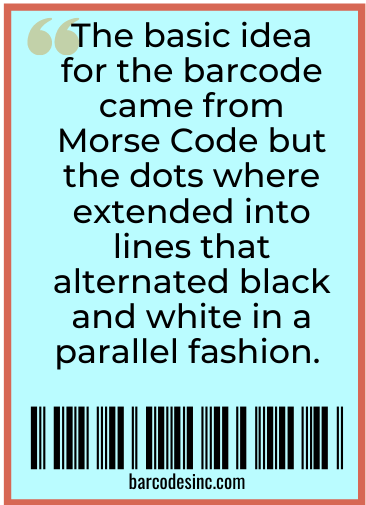
A barcode is a machine-readable combination of codes embedded in a pattern of vertical black and white stripes printed or adhered to a product. However, barcodes are no longer limited to the one-dimensional design and have evolved to other shapes, sizes, and designs. These combinations contain information associated with the item on which it is attached. A simple scanner over the barcode will reveal a lot of information about the product like its specific identity, the manufacturer, and the country where that barcode was registered. These information types have proved to be important in commerce, especially when tracking products and assets.
Just imagine if up until now, every product or item that enters into your company’s system has to be manually encoded and searched every time. It would take an incredibly huge amount of time and human resources before a single product package could be fully recorded and inventoried in the system. Factor in human error and other elements that affect such recording accuracy, and you would have an inaccurate book and not up to date.
Now, as long as there is a barcode on a product, the only thing left to do is to scan it. The bars or figures on the stickers are the ones intended for the barcode scanner. It is the device that makes the beeping sound every time a bar code is passed through it. The information scanned by the device is then encoded in the data system of the company for easy access and tracking.
You may also wonder what the numbers at the bottom of the code are for. These numbers are intended for human analysis and are translations of the codes embedded in the figure. Most two-dimensional barcodes have already been done away with incorporating numbers in the barcodes. This is because even modern-day scanners do not read these numbers. However, these numbers will give you a glimpse and a brief idea about the information contained in the barcodes, so it would still be helpful to know about them. Sometimes, all you need is a little bit of research and knowledge to understand those strings of digits below the figure.
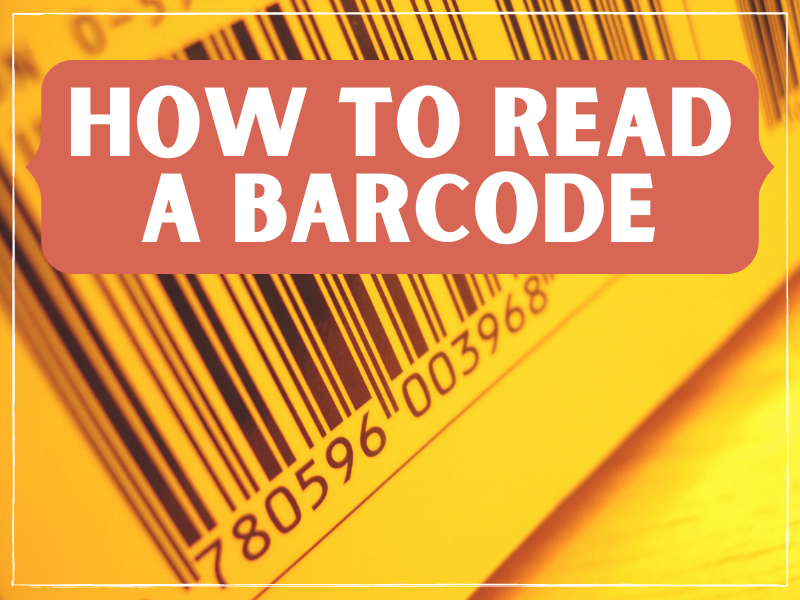
This article will help you with all the information you need to know about a product through its barcode by using these page jumps:
History of the Barcode
How barcodes are made
Why barcodes were made
Types of barcodes
Information contained in a barcode and how to read them
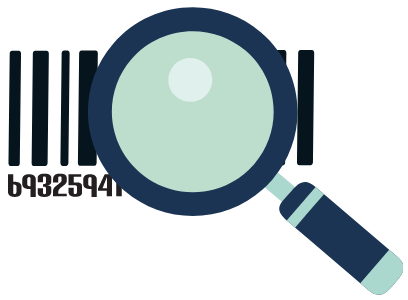
History of the Barcode
The barcode had its very origin in the Drexel Institute of Technology way back in the 1940s. It all started when the grocery store owner started looking for someone to develop a concept for a much faster and efficient system for their business. This was when the conceptualization of the barcode began.
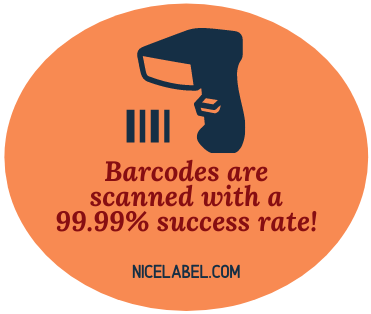
As we know it today, the linear bar code was inspired by the dots and dashes derived from the Morse Code. The primary thought of its inventors, Norman Joseph Woodland and Bernard Silver, was to have something that would capture information regarding a certain product automatic and specific. Would you believe that Norman Joseph Woodland found the answer while he was at the beach? He pulled his fingers while drawing dots and dashes toward him, and that was the birth of the one-dimensional bar code we use and see today. They likewise worked on developing a scanner that would read the information encoded on the barcodes.
It is worth mentioning that the first-ever barcode looked like a bull’s eye target and far from the barcode that we know and use today. It was then known as the Bulls-Eye Barcode. The idea was born with the primary consideration that it would be possible to scan the code from any direction. However, it was a concept that was not able to undergo further development and innovation. It took up a lot of space due to its shape, and the simplicity of the printing technology did not allow its mass printing.
They eventually had both designs patented, but it was not used as much then as it is being used in our modern world today. The convenience and benefits it would bring were not yet appreciated at that time.
The first time the concept was put to use was on railroad freight cars. Bar codes were used to track the different destinations and cargo. It was called KarTrak Automatic Car Identification and involved combinations of colored stripes attached to the sides of the railroad car. Each combination corresponds to information regarding its ownership, type, and identification.
But it didn’t take long before the cars’ instability during the scanning process affected the accuracy of the data collected. As a result, the system was eventually abandoned.
Eventually, the concept underwent several innovations from different people. Although Bernard Silver died at an early age of 38, Norman Joseph Woodland continued their work and developed their original barcode to what is now known as the Universal Product Code (UPC). This is the barcode used across the United States of America in almost all aspects of commerce. It is because of this invention that he has become known as the “Father of Barcodes.”
The barcode scanner also evolved with the changes in the barcode. It was likewise innovated and developed. It is either made of lasers or cameras and fixed or handheld. It is the primary aid for cashiers and those in charge of inventory.
The first item with a UPC barcode ever scanned in June 1974 was a 10-pack of Wrigley’s gum at Marsh’s Supermarket in Troy, Ohio. It is the first supermarket to have a checkout scanner installed by the National Cash Register. The said event was such a momentous occasion that the 10-pack Wrigley’s gum was preserved in a museum.
A lot has changed since then! Now, barcodes have become two-dimensional using geometric patterns and can now hold a much greater amount of information than a one-dimensional barcode. These codes, however, could no longer be read by a traditional barcode scanner. 2D Barcodes, on the other hand, are scanned using smartphones. It has become that complex yet convenient and accessible at the same time.
Barcodes have been used everywhere since its standardization in 1973. It is not just found on manufactured goods or products you see in the retail, department, and grocery stores but also in rental cars, tolls, luggage, bees, and who knows, humans might end up with barcodes in the future. Everything is possible.

How Barcodes Are Made
The regulatory board when it comes to barcodes, specifically the Universal Product Code, in the United States is the Global Standards One or GS1 US, formerly known as the Uniform Code Council. It is a non-profit organization responsible for assigning a code prefix to every company in the US to ensure that each has its own unique identity. It is worth noting that the UPC abides by the Global Trade Identification Number (GTIN) standard set forth by the regulatory agency.
If the company needs no more than ten UPC barcodes, they can easily purchase it for $75 each, and also, they shall pay the $10 annual renewal fee for their license. If you are a big company and your business requires you to come up with more than 10 UPC barcodes, you should file an application with the GS1 US for a company prefix so you can start producing your barcodes.

Why Barcodes Were Made
A barcode can be considered a language of its own. It relays information within a system or from one system to another regarding a product. The information gathered is then used by these systems to communicate what is needed, what is lacking, what needs to be sorted, or whatever needs to be done.
The Universal Product Code (UPC) sticker is usually integrated into the product by the manufacturer and not by the wholesaler or retailer. The UPC’s general purpose is to help the system identify the individual product from all others, including the batch of the same products it came from. The barcodes make every product’s traceability easy and manageable across all stakeholders, including the manufacturer, the wholesaler, and the retailer. It has made the process of inventorying time and cost-efficient by eliminating individual and manual checking of inventory. The errors caused by the manual process were reduced as well with the invention of barcodes.
Contrary to what we know, the UPC does not contain the price of the product. This variable varies widely from retailer to retailer, so it would be wise not to integrate it in the barcode with the pricing.
The product’s price appears every time the barcode is scanned because the code is linked to the price data in the retailer’s system. This is why cashiers do not manually search for the price each time. The specific product tied to the code would also be automatically be deducted from the system for inventory purposes.

Furthermore, the number of products entering the warehouse can be recorded and tracked real-time into the company’s inventory without worrying about backlogs. The same is true for outgoing stocks. The system will automatically inform you if you are running low on stocks on some products frequently purchased by consumers. The management can make more informed decisions due to the availability of accurate data obtained by scanning the barcodes of all products in and out of the company’s system.
There is no need for the company to hold orientations and training just for inventory. All that needs to be taught is how to operate a barcode scanner, and everything is set. It has substantially reduced labor costs for companies and has allowed them to shift focus in customer service.
The expenses linked with creating barcodes and the materials used to print or stick them to products are not that costly either. Companies still save a lot of money from acquiring them. Their use is not limited to products only but can also track company assets such as equipment and gadgets.
The existence of barcodes has also helped in the traceability of products for purposes of product returns or recalls for consumers’ health and welfare.
The shopping experience for consumers has also improved with the introduction of the barcode. Self-service checkouts have become more convenient. Its purpose is not limited to brick and mortar shops alone as barcodes are also used by online stores, not just to identify the product but also to track their deliveries.
The barcodes have also served as an added security against shoplifters. There are devices placed by store owners at their storefronts to determine whether a product has been scanned out of their system already or not. That means whether a product had gone through checkout before it left the store or not.
Barcodes have truly made a difference in how businesses are being managed, especially in its inventory aspect. It has brought convenience and efficiency not just to company owners but to customers as well.

Types of Barcodes
There are several types of barcodes used in the commercial industry. There are universals, shortened ones, and those used in specific areas of the industry. Learn the type of barcode you are dealing with to properly interpret and identify the product to which it is adhered to. Here’s a list of commonly used types of barcodes and those that consumers are most likely to encounter in their transactions:
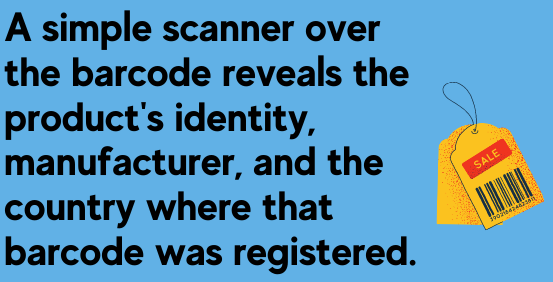
- UPC-A: This one is more known as simply the UPC and is consisted of twelve digits. The Universal Product Code (UPC) is used across the United States, and it is what you can see on the products put out on shelves of retail, grocery, and department stores. It is mainly used for linking product prices, sales checkout, and inventory.
- UPC-E: This is the shortened version of the UPC-A, also known as the zero-suppressed symbol, containing only six digits but still holds the same amount of information that a regular barcode does. This is used if the product or item concerned is small in size that a regular-sized sticker and barcode could not fit. However, standard rules must be followed when reconstructing an ordinary UPC to a UPC-E depending on what numbers the manufacturer’s identification number ends and how many zeros there are.
- EAN-13: The UPC is its local version in the United States. The European Article Number or EAN-13, also known as the International Article Number, is the international version of barcodes. It contains 13 digits, as indicated in its name. The barcode scanners used in US stores are also able to read stickers containing this type of barcode.
- EAN-8: UPC-A is to EAN-13 as UPC-E is to EAN-8. This is likewise the shortened version of EAN-13, but it contains eight digits rather than six. It is also used if the product’s size is too small for the EAN-13 version of the barcode.
- ISBN-13: ISBN stands for International Standard Book Number. This type of barcode is used exclusively for books and is similar to the standard set forth by EAN-13.
- ISMN: If there’s a code exclusively for books, the ISMN, on the other hand, was made specifically for music sheets. It is likewise similar to the EAN-13 standard.
- Code 39: This uses a combination of digits, characters, and other symbols and is way longer than Code 128 as it has no limit. It can include all characters in the 128 ASCII (0-9, a-z, A-Z, and other special characters) and is only limited by the size of the item over which it is adhered to. It is also the oldest type and is used by the government, including in the health care system, logistical, tracking shipment, and defense applications. It is also used in the electronics and automotive industries.
- Code 128: This is the code used when the information required is more than just that needed for inventory, as it can hold a whole load of data compared to the other barcodes. An attribute that sets it apart from the previous types of barcodes mentioned is that it is alpha-numeric like Code 39. It is used mostly by manufacturers for their warehouse, transport, and logistics functions.
- Pharmacode: From its name, this code is used in pharmaceutical commerce. Multiple colors are used for this type of barcode for added security and control in drugs and medicines packaging.
- Interleaved 2 of 5: This type of barcode is numeric only, and the numbers must always come in pairs as one pair is equivalent to one symbol. The digit 0 is added just in case a combination is an odd number. It is used in manufacturing, distribution, and warehouse.
- Product Lookup (PLU): Although technically not a barcode since it is not made up of bars, PLUs somewhat serve the same purpose. It is used in marking fruits and vegetables and is usually just four or five digits short. This code’s most helpful tip is to determine which product is organic using the number 9 and which are genetically-modified with the use of the number 8.
- Intelligent Mail Barcode: This code is gradually replacing the existing Postnet barcode currently used by the U.S. Postal Service to encode zip codes. It has a more complicated composition because its bars have sixty-five different heights, which contain the ZIP code and other point codes that serve as the basis for delivering mails and parcels across the United States.
- 2D Barcodes: This is different from the ordinary barcodes we see and cannot be read by barcode scanners, but you can use a smartphone to scan the details encoded in it. Examples of this include the QR Code, PDF 417, and MaxiCode. This is continuously innovating and would enable people in the industry to encode information on the tiniest of items, such as a pill.
- QR Codes: The most popular type of 2D barcode nowadays is the Quick Response (QR) Codes. Businesses mostly use it as an easy access link to their websites, promotions, or even payment purposes. Smartphones can easily recognize this type of code.
- PDF417: This is a big type of 2D barcode, literally, compared to the other types such as the QR Code. This can be found on your driver’s license and chosen by the Department of Homeland Security for use in their system.
- Maxicode: What sets Maxicode apart from the other 2D barcodes is that it can encode two messages at a time, one primary message and a secondary message.
- Aztec: This is a type of the 2D barcode invented by Andrew Longacre and Robert Hussey in 1995. Although originally developed for Welch Allyn, a medical device manufacturer, it is now embedded in the transport industry. It has become the standard and can be found on train tickets and electronic boarding passes.
- Data Matrix: It has become the most commonly used among the 2D barcodes because of the amount of information it can hold despite its size. You can encode up to 50 characters in this design. Used in the manufacture of electronics and even in healthcare.
- National Drug Codes: The US Food and Drug Administration (FDA) made the use of barcodes on medications mandatory in February 2004. Each drug now has an 11-digit identification recorded in a system. This has helped a lot in the medical industry, especially in the distribution of medication.
The main difference between a one-dimensional barcode and a two-dimensional barcode is the type of information they can hold. A linear bar code can only hold text information. Simultaneously, 2D barcodes can handle more complex information such as links to websites, images, price, quantity, and other types of information.

Barcode Information and How to Read Them
Although barcode scanners and even smartphones can read a barcode for you, you don’t always have to rely on them so that you can extract the information encoded on the bars. You can read them manually through the digits found at the bottom of the lines, referred to as human-readable numbers. Sometimes, there can be a glitch or fault in how the barcode is printed, and the scanner cannot read it, so the digits found at the bottom have to be manually entered into the system for it to be recorded. The different types of barcode previously mentioned requiring specific methods of reading them as each is unique.
We will be focusing on the UPC barcode, as this is the code you can generally find in almost all products in the market. The UPC-A barcode is composed of twelve digits and usually begins with the digit zero. This row of numbers is what they call the Global Trade Item Number (GTIN).
The first six digits are labeled as your company prefix and are provided by the GS1. As earlier mentioned, GS1 is the regulatory board that monitors all matters related to barcodes. The company prefix is unique to every company and serves as the company’s identification. No two company prefixes are alike. The second half of the 12-digit code, except the last digit, is the identification number of the product itself. The complete product identification is associated with the first half of your company prefix, which gives each item its own unique identity. The last digit is referred to as the check digit. It serves as the check or security digit that makes sure that all the eleven digits preceding it were scanned correctly according to the same algorithm used for the European or International Article Number.
You can then look up the entire Global Trade Item Number in the GS1 Company Database to determine the identity of the manufacturer and that of the product. Other information about the manufacturer is likewise available on their website, as its current address. If you search the GTIN in the UPC Database, you will find the manufacturer’s name and the issuing country, and the physical attributes of the product like its weight or size.
The only difference between a UPC-A barcode and an EAN-13 barcode is the additional digit at the beginning of the EAN-13 code that determines the number system and country code where the number was registered. A product can be manufactured in Hongkong, but the barcode used is of American origin, thereby making the country code that appears on the US’s barcode.
The first few digits on a barcode will not help you determine the origin of the product. Rather, it will only tell you the country which issued the barcode itself and not the product. This has been a long-held misconception about the information contained in barcodes. It all probably started through a chain mail way back in 2008, which misinformed the public that the barcode’s first three digits represent a country code.
Barcodes, specifically the UPC barcode, give out three types of information only: what type of barcode it is, the manufacturer of the product, and the exact identity of the product. It does not include information as to the origin of the product itself. If you are trying to avoid products from certain countries, then you should not look into the barcode but rather at other determinants such as “Made in…” tags attached or printed on the product.
It must be emphasized that the origin is referred to as the country where the barcode was made and registered, not where the product was manufactured. The US and Canada, for example, have a country code of 0. However, they no longer print it on the code because they felt no need for it, considering that most of these products originate from distributors and manufacturers in the US.
| Beginning Code | Country of Origin of Barcode |
| 00001 – 000090001 – 0009001 – 019030 – 039 | United States |
| 300 – 379 | France |
| 400 – 440 | Germany |
| 460 – 469 | Russia |
| 500 – 509 | United Kingdom |
| 690 – 699 | China |
| 750 | Mexico |
A one-digit number system identifier is also integrated at the beginning of the entire GTIN-12 numbers, which corresponds to a specific number system provided by the UPC.
| Digit | Number System |
| 0 | Regular UPC Code |
| 1 | Regular UPC Code |
| 2 | Random Weight Items |
| 3 | National Drug Code and National Health Related Items |
| 4 | In-store Marking of Non-Food Items |
| 5 | Coupon Use |
| 6 | Regular UPC Code |
| 7 | Regular UPC Code |
| 8 | Regular UPC Code |
| 9 | Coupon Use |
The commercial industry has relied on barcodes for decades. This system has proven to be extremely helpful, particularly in dealing with piles and piles of inventory and monitoring products’ movement.
Barcodes are here to stay—and for all the right reasons!